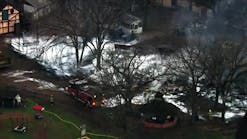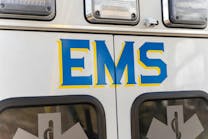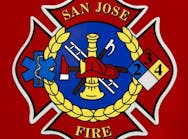NIOSH, NFPA and all other regulatory groups are very clear in their message: the use of the ICS is not optional. When this process first evolved from the California FIRESCOPE project and Phoenix Fire Ground Command program, ICS had the potential of being a pivotal/historical change in how we do business.
ICS could have ended up as a "flash in the pan" or hitting the "round file" in due time, but history reflects that our business took to ICS like ducks to water. It would be unimaginable to turn our backs on a process that has tremendously enhanced firefighter safety while allowing fire departments to be more effective in solving our customers' emergencies. What a huge, positive impact that the ICS/IMS has had on our members and customers when used properly and consistently.
On behalf of our industry, thanks to Phoenix Fire Chief Alan Brunacini and the FIRESCOPE cities for having the vision and conviction to make such a sweeping, positive operational impact. With celebration and acknowledgement, it is now time to look to the future and be a part of molding the next organizational change. I am convinced that the next logical step in the firefighter safety and customer service journey is crew resource management (CRM) applied to the incident management system.
What Is CRM?
CRM is not a new command system, so relax, and don't get nervous. It is not a "flash in the pan" either. With more than 20 years of use in the airline industry, CRM has "paid its dues." If you are looking for a way to eliminate human error from your operations, do read on and pay attention because CRM is just what the doctor ordered.
On Dec. 28, 1978, a commercial airliner needlessly and tragically crashed in Portland, OR. Essentially, the captain of the aircraft did not heed the cautions and warnings expressed by the experienced members of his flight crew. They told the captain that the aircraft did not have enough fuel to compensate for a problem with the landing gear.
The case study that I cited here was the crash of United Airlines Flight 173. The plane ran out of fuel six miles from the airport, resulting in 10 fatalities and 23 injuries. As the emotional stress and pressure increase in the cockpit of that DC-8 aircraft, several critical decisions were made that turned out to be disastrous. The CRM program was developed in response to and as a direct result of the collection of human errors that happened aboard United 173 that fateful day.
The Federal Aviation Administration (FAA) led the way to fully develop and implement the comprehensive crew resource management system in response to the last critical element, human error, in preventing commercial aviation crashes. When this human factors performance enhancement system was offered up in 1979, it was called "Cockpit Resource Management." After 23 years of use, six major revisions and a name change, "Crew Resource Management" is one of the best human factors engineering and performance enhancement programs available.
CRM Components
By way of a brief review of the CRM program, the foundation principle is that "to err is human." A formal system of critical checks and balances must be placed into motion to eliminate, or at least reduce the likelihood of, human error. CRM recognizes that humans are prone to making errors and compensates for this fact by adding a second set of eyes, ears and additional brainpower. The design allows for redundancy on the flight line (cockpit) using a "challenge and confirm" mentality to get the decision right the first time every time. It just makes good sense that two heads are better than one when it comes to making critical decisions.
Four tenets/guiding principles are used to frame the CRM concepts:
- Communications
- Teamwork/Leadership
- Task Allocation
- Critical Decision Making
Each of these elements is used to improve human factors performance at critical times. The first three of these elements have been discussed in previous Firehouse® articles:
- Communications (July 2001)
- Teamwork/Leadership (August 2001)
- Task Allocation (November 2001) This article will deal with the fourth CRM element, which is critical decision making.
Critical Decision Making
Perhaps the best place to open a discussion about critical decision-making would be to mention the three "decision outcome avenues" that CRM identifies. The best accident that we can experience is, of course, the one that we can avoid! The philosophy is that with the correct education, training, experience and attitude applied at the proper time, accidents can be avoided before a negative consequence occurs.
The next plan is to use a CRM component to "trap" a bad decision long before there is a price to be paid (accident or injury) by the troops. This second-level outcome is just as good as the first one, if it happens in the appropriate time frame (before an event can occur). Most likely, someone else will be the person "trapping" another's mistake. Think of this part of the CRM process as having Cal Ripken playing shortstop in the 1980s and '90s while you are pitching. Nothing gets through to the outfield. The fact is that someone else will likely be your saving grace (catch your error), rather than yourself. You would not make the miscue in the first place if you were aware that the consequences of the decision would be an error of any type.
The last CRM priority is to mitigate the results of the effects of an accident or injury after the fact. An analogy is that of milk spilled out of the bottle and now the only avenue left to fix the situation is to get the roll of paper towels and soak up the damage.
Unfortunately, poor operational decisions have a much greater impact than the need for a few paper towels. According to the type and severity of error, for instance, if an improper tactic or strategy is implemented, the impact could be fatal to our members or customers. This is the least desirable of the matrix levels, but it helps keep the incident commander focused that he or she must be prepared to deal with the results of bad decisions. Actions such as deployment of the rapid intervention crew, calling additional alarms and clearing tactical radio frequencies for emergency traffic all come to mind when taking steps to mitigate the impact of a bad decision when losing track of a firefighting crew.
Preparation Is The Key
The preparation of the command team is perhaps the very best way to avoid an accident from occurring. Being capable of doing the job will increase the ability to make good critical decisions as well.
One area that the commercial airline industry clearly beats us hands down is in the arena of training and certification. Earning that fourth stripe on the sleeve of the pilot's dark-blue blazer takes an untold amount of training and flying experience hours. In fact, on-line pilots are tested in two different ways every year. They have to pass a comprehensive simulator test and then complete a flight satisfactorily under the watchful eye of a FAA evaluator during an unannounced "check- ride."
Our business must find a way to implement a similar program for incident commanders and their team members to obtain certification to perform these critical job functions. The manner in which paramedics train and re-certify is a perfect template that should be considered to provide this command team certification program for the command team. Airline pilot trainers point out that you have to be able to fly the plane before you can make quality critical decisions regarding flight systems (duh!).
The same logic can - must - be used for the preparation of the members of the incident command team. Nationally standardized training and testing standards must be developed for these roles. The National Fire Service Incident Management System Consortium, under the leadership of Seattle Fire Chief Gary Morris, has started an effort to fill this need. This group's purpose is to identify the minimum skills, knowledge and abilities that one should have before they should be allowed to command an incident of any type. Thank goodness that the airline industry has such standards in place or we would have a lot more emergency disaster work to handle.
Communications preparation must be discussed in any debate about improving critical decision-making. Under "ideal conditions," communications between two humans are less than perfect. When my oldest child was preparing to graduate from high school in 1991, he asked for a car upon successful completion of his secondary education. I had the resources and he was a good student both in the classroom and on the athletic field (his major was either girls or sports, I don't remember back that far). So, I agreed to make the purchase to have the vehicle ready for him by his mid-June graduation date. When I said yes, my namesake visualized a new Corvette or perhaps a Porsche 914. I immediately envisioned the 1978 VW Bug being rehabilitated for several hundred dollars. We agreed somewhere in the middle and obtained a pickup truck.
The purpose of this story is to point out that complete and effective communications between people is difficult under ideal conditions. Now add the robust confusion of the incident scene and the framework has been laid for extremely poor communications to exist. Members of the command team (and all fire officers for that matter) must work at and be skilled in effective emergency incident communications. (For more details about effective command team communications see the July 2001 issue of Firehouse®.)
Finally, under the heading of preparation, we must discuss the need for proper education, training, experience and attitude. Each one of these elements must be considered in order to be an effective command team member. These personal traits speak beyond the necessary process of required national certification. To steal a Tom Peters axiom, we must "stick to the knitting."
To interpret this truism, we must be able to flawlessly execute the basics of our profession (do the task correctly the first time). This action (great basic performance) enables us to handle response work to meet our customer's needs, while keeping our members safe.
Strategic Command Positions
Members of the command team (except the safety officer) must be in the proper location to communicate and to make the critical decisions that will determine the success or failure of the operation. Both the lives of our members and those of our customers weigh in the balance of the incident action plan (or lack of a plan) that command puts into motion.
It is imperative that the command team members set up their operation at a reasonable command post facility and operate using radio headsets tied into their mobile radio units, no exceptions. The use of the mobile radio as compared to the portable radio will improve the engineering component of communications by about sixfold. Consider that the portable operates on about three watts of power, whereas the mobile pushes about 35 watts, meaning that there is no contest of superior electromagnetic wave performance.
When the incident commander carries the axe down the hallway or chops a hole in the roof, it's fun and stress relieving for the field boss, but he or she is totally out of control! No command post (at incidents that exceed one unit) is equivalent to ineffective and inefficient command, placing life and property at greater-than-acceptable risk.
If members of the command team members can't operate from an effective command post position, replace them and do it sooner rather than later. Perhaps they should go back to being company officers or an assignment of all day work attached to the light wagon would be in order. Such behavior (hands-on fire attacking incident commander) will only negatively affect incident operations and everyone's health.
Allowing an "aerobic incident commander" to operate by wandering around at a call would be like letting the air traffic controller operate on the tarmac of the airport's runway. When the pilot needs to depend on the air traffic controller he or she can be found (all of the time for that matter) in the appropriate location to provide the critical help that the pilot relies upon to control the aircraft. That location, of course, is the air traffic control tower that is designed to perform the necessary functions of the job, no exceptions.
Visualize a stormy night and the "senior" controller announces that he is putting on a raincoat, grabbing a clipboard and a flashlight, and heading to the taxiway to guide a troubled airliner home. The FAA would not punish the deranged controller, but would get him or her some psychological help for such bizarre behavior. Maybe the "aerobic incident commanders" need a mental health evaluation to insure that they are fit for duty, after they promise to never repeat the negative performance.
CRM adds a new command post term and concept: the "sterile cockpit rule." The sterile cockpit rule means that all unnecessary distractions are eliminated from the work environment to help critical decisions to be made properly. Thirty minutes before take-off, 30 minutes before landing and anytime an unplanned event occurs, the flying pilot puts sterile cockpit rules into place. No unnecessary or unrelated communications (personal chatting and the like) are allowed to take place during the time that this rule is in effect.
The needed transition is for us to implement and use the "sterile cockpit" rule at our command post. When we have members that are operating in an immediately dangerous to life and health (IDLH) environment, the incident commander should declare that the sterile command post rule is in effect. Maybe there should be an obvious external indicator (perhaps a flashing blue strobe light) announcing the fact that the "sterile command post rule" is in effect. Whenever members are in IDLH atmospheres, the command post should operate under "sterile command post" rules.
Support Officers' Decision-Making Role
Safety officer. The safety officer (SO) becomes the remote "eyes and ears" of the commander and is a principal player of the command team. The SO must get a reasonable view of the risk, if possible. The SO watches out for unsafe acts, unsafe conditions and unsafe behaviors with the goal of correcting any out of balance actions before they can become a negative consequence.
Perhaps this position SO is the second most important role that plays out at an incident and represents a tremendous informational resource to form critical decision from during emergencies. It is well established that the SO can shut down or alter operations that indicate imminent accident or injury. Understanding this fact, it is obvious that the person who fills this specific role needs to be educated, trained, experienced and hopefully certified as an incident safety officer. (National certification is available through the Fire Department Safety Officers Association.)
An incident that places members in IDLH environments must have at least one safety officer identified and operating at the scene. The most effective and efficient way to staff this required command team position is to assign a company officer to fill the role of initial safety officer. After visiting many departments, the national trend is to have a single safety officer who is trained and qualified to fill the role. Perhaps the department is "enlightened" and has a shift safety officer that response to all emergencies to handle this critical role.
In either situation often there is a delay in the arrival of that single individual. Therefore, the most efficient and effective way to address this mission critical need is to assign a specific, early-arriving person to the job of safety officer. For instance, a standard operating procedure might identify that the second-arriving engine company officer shall immediately assume the role of safety officer at incidents that involve IDLH atmospheres. The initial SO maintains this responsibility until a more qualified person arrives on location and formally relieves the initial safety officer, at which time he or she can return to the supervision of their company.
The duties and responsibilities of the incident safety officer should be clearly defined, well documented and trained upon by all members of the department. Without the accessibility to and support from an incident safety officer, high-quality critical decisions will not be able to be made. The incident commander's blind spot (barrier holes) will be too large of a deficit to be able to successfully over come, resulting in an injury rate that is not acceptable to anyone that serves in fire-rescue operations.
Deputy incident commander. Another required command team position is that of deputy incident commander. The parallel to this job title is that of co-pilot or first officer. The deputy incident commander adds a clear-cut second in command person that possess all of the skills, knowledge and abilities of the incident commander. The arrival of this person adds the redundancy element to the command post operations that is necessary to help catch human errors before they have a chance to become a consequence. The deputy incident commander is in a great position to use the "challenge-and-confirm" process to eliminate errors before they occur.
What a great way to do business when lives hang in the balance of emergency incident decisions. Many fire-rescue agencies use a minimum of two paramedics to delivery advanced life support care. The basic concept is that the risk of making an avoidable and predictable mistake is too high for the agency to assume, so a second paramedic is added to the response resources to provide instant quality assurance. This quality assurance/quality control element has been added to this sophisticated care to lower the risk of mistreating patients in their hour of grave need. The same philosophy exists within the CRM program to help drive out human error. The two-paramedic concept is a textbook example of the utilization of CRM "redundancy on the fight line" concept.
Accountability/documentation officer. Another member of the command team is the accountability/documentation officer. This person must be able to track all members all of the time whenever they are in IDLH environment. The accountability officer must be able to quickly and correctly answer four questions about the members operating at the incident. The questions are:
- Who are the members (by name)?
- Where are the members located (i.e., division 1)?
- What actions are they taking (i.e., fire attack)?
- What conditions are they encountering (i.e., fully involved attack space for 15 minutes)? With these four vital pieces of information the incident commander can make higher-quality critical decisions than without this information. Also, by tracking the who, where, what and conditions, it gets tough for members and companies to "freelance" with so many eyes upon them. The best accountability system must have a qualified human to effectively operate it or it has no value at the incident.
The other duty of this position is to be the "scribe" for the incident commander during the battle. The accountability/documentation officer must be able to use check sheets, command boards and any other command enhancement tools found at command posts. The incident commander needs to focus on the ongoing fire fight (action plan) and not try to figure out how to put paper in the fax or run the accountability board. This job title is a great justification to add chief's drivers to your system (or keep these positions if you already have them). The duties that are described here are not optional and cannot be performed by one individual.
In Summary
Crew resource management is a very useful collection tools for departments to add into their incident command system program. By reviewing the NIOSH firefighter death reports, the need to correct human errors that lead to fatal accidents is painfully obvious. CRM is not a new command system, but in fact, is a specific way that command team members can eliminate human error from ever occurring. The program consists of four major elements: communications, teamwork/ leadership, task allocation and critical decision-making.
CRM acknowledges that human errors will happen and cannot be avoided by a single individual. Therefore, a "crew" approach is best used to manage the resources at hand to resolve all emergencies. A minimum command team (according to your author) should be four members to include the incident commander, deputy incident commander, safety officer and accountability/documentation officer. The full command team needs to be up and operational at all calls involving IDLH atmospheres.
Look for the last article on CRM, to be published soon, which will wrap up and review the entire series of CRM articles. Until next time, be safe out there!
Dennis L. Rubin, a Firehouse® contributing editor, is the cty manager and public safety director for the City of Dothan, Alabama. He is a 30-year fire-rescue veteran, serving in many capacities and with several departments. Rubin holds an associate in applied science degree in fire science from Northern Virginia Community College and a bachelor of science degree in fire science from the University of Maryland, and he is enrolled in the Oklahoma State University Graduate School Fire Administration Program. Rubin is a 1993 graduate of the National Fire Academy's Executive Fire Officer Program and holds the national Certified Emergency Manager (CEM) certification and the Chief Fire Officer Designation (CFOD) from the International Association of Fire Chiefs (IAFC). He serves on several IAFC committees, including a two-year term as the Health and Safety Committee chair. Rubin can be reached at [email protected].





